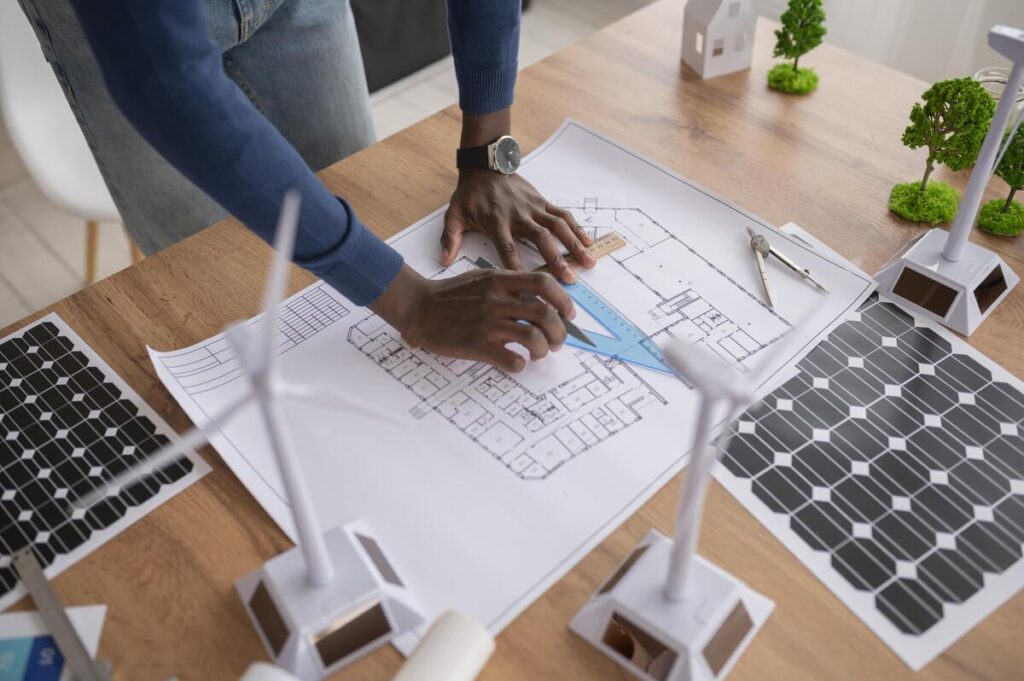In recent years, the global construction industry has increasingly recognized the imperative of integrating sustainability into project management practices. According to a report by Dodge Data & Analytics, green building construction is projected to grow significantly, with nearly half of all construction projects expected to be green by 2025. This shift underscores a critical need for sustainable construction project management, which integrates environmental, social, and economic considerations throughout the project lifecycle.
Sustainable construction project management goes beyond traditional approaches by emphasizing resource efficiency, reducing carbon footprints, and fostering community well-being. It involves employing advanced technologies such as Building Information Modeling (BIM), energy modeling software, and IoT to optimize energy use and enhance building performance. Green certifications like LEED and BREEAM further validate adherence to rigorous sustainability standards.
As we delve into the key principles and tools driving sustainable construction project management, it becomes evident that embracing these practices is not only necessary for environmental preservation but also essential for meeting future economic and societal challenges.
Table of Contents
Defining Sustainable Construction Project Management
Sustainable construction project management integrates environmental, social, and economic sustainability principles into the construction process from inception to completion. It aims to minimize the negative impacts on the environment while maximizing the social and economic benefits of construction projects.
At its core, sustainable construction focuses on reducing waste, conserving natural resources, and enhancing energy efficiency. This involves careful selection of materials, prioritizing those that are renewable, recyclable, or have a low environmental impact. Energy-efficient designs and technologies are implemented to reduce the overall carbon footprint of buildings and infrastructure.
Sustainable project management emphasizes the lifecycle of a project, considering not only the construction phase but also the long-term operation and maintenance of the built environment. This holistic approach ensures that sustainability measures are not just applied during construction but are integrated into the ongoing use and functionality of the project.
Suggested article to read: Integrating Lean Principles in Construction Project Management (2025)
Economic sustainability in construction involves managing costs effectively while delivering high-quality results. This includes considering the long-term economic benefits of sustainable practices, such as reduced energy costs and increased property value. Sustainable construction also supports local economies by sourcing materials and labor locally, fostering community development.
Social sustainability ensures that construction projects contribute positively to the community and the well-being of the people involved. This includes ensuring fair labor practices, creating healthy and safe working conditions, and engaging with local communities to ensure that projects meet their needs and expectations.
In summary, sustainable construction project management is a multidimensional approach that balances environmental stewardship, economic viability, and social responsibility. By adopting sustainable practices, project managers can deliver projects that not only meet the immediate needs of clients but also contribute to the long-term health and prosperity of the environment and society. This comprehensive approach is crucial for addressing the global challenges of resource depletion, climate change, and social inequity.

Key Principles of Sustainable Construction
The key principles of sustainable construction revolve around minimizing environmental impact, enhancing economic viability, and promoting social responsibility throughout the lifecycle of a project. Environmental sustainability focuses on reducing resource consumption, minimizing waste generation, and using renewable materials. Energy efficiency plays a crucial role, involving the adoption of green building practices, energy-efficient technologies, and renewable energy sources to reduce carbon emissions and operational costs.
Economic sustainability ensures that projects are financially viable over their lifespan. This includes optimizing resource use, minimizing lifecycle costs, and considering long-term operational savings through efficient design and construction practices. Social sustainability emphasizes the well-being of communities and stakeholders by fostering inclusive development, promoting health and safety standards, and supporting local economies through job creation and skills development.
Together, these principles guide sustainable construction towards creating built environments that are environmentally responsible, economically feasible, and socially beneficial. By integrating these principles into project management strategies, stakeholders can mitigate environmental impacts, enhance resilience against climate change, and contribute positively to the quality of life for present and future generations.
Suggested article to read: The Role of BIM in Construction Project Management; 2025 Review

Tools and Technologies for Sustainable Construction Project Management
Tools and technologies play a crucial role in advancing sustainable construction project management by enabling better planning, monitoring, and implementation of sustainable practices. Here are some key tools and technologies:
- Building Information Modeling (BIM): BIM facilitates collaborative design and construction by creating digital representations of physical and functional characteristics of a project. It allows stakeholders to visualize, simulate, and analyze various aspects such as energy performance, material quantities, and construction sequencing, thereby optimizing resource use and enhancing efficiency.
- Energy Modeling Software: Tools like energy modeling software simulate the energy performance of buildings based on design parameters, climate data, and occupancy patterns. They help in optimizing building designs for energy efficiency, selecting appropriate HVAC systems, and predicting energy consumption to meet sustainability goals.
- Life Cycle Assessment (LCA) Tools: LCA tools assess the environmental impacts of a building or infrastructure project throughout its lifecycle—from raw material extraction, construction, operation, to end-of-life disposal. They quantify impacts such as carbon footprint, resource depletion, and water use, guiding decisions towards more sustainable material choices and construction methods.
- Green Building Certifications Systems: Certifications like LEED (Leadership in Energy and Environmental Design) and BREEAM (Building Research Establishment Environmental Assessment Method) provide frameworks for measuring and verifying sustainable building practices. They encourage the adoption of energy-efficient designs, sustainable materials, and construction practices that minimize environmental impact.
- IoT (Internet of Things) and Smart Building Technologies: IoT sensors and smart building technologies monitor and optimize building performance in real-time. They enable efficient energy management, predictive maintenance, and occupant comfort optimization by collecting and analyzing data on energy usage, indoor air quality, and building operations.
- Construction Management Software: Project management software tailored for construction integrates scheduling, budgeting, and resource management functionalities. These tools enhance project coordination, streamline communication among stakeholders, and ensure compliance with sustainability goals and regulatory requirements.
- Prefabrication and Modular Construction Technologies: Prefabricated components and modular construction techniques reduce onsite waste, improve construction efficiency, and enhance quality control. They minimize environmental impact by optimizing material use and reducing construction waste during the building process.
These tools and technologies empower construction project managers to adopt sustainable practices effectively, achieve regulatory compliance, and deliver projects that are environmentally responsible, economically viable, and socially beneficial.
Suggested article to read: Construction Monitoring in Project Management Tools; 2025 Guide

Conclusion
The integration of sustainable principles into construction project management represents a pivotal shift towards addressing global challenges such as resource depletion, climate change, and social equity. By prioritizing environmental stewardship, economic viability, and social responsibility, sustainable construction project management aims not only to minimize environmental impacts but also to enhance economic efficiency and promote community well-being.
Through careful material selection, energy-efficient designs, and innovative technologies like BIM, energy modeling software, and IoT, stakeholders can optimize resource use and operational efficiency. Green building certifications and life cycle assessment tools further ensure projects meet rigorous sustainability standards from inception through completion.
By leveraging these tools and embracing sustainable practices, construction project managers can create built environments that are resilient, cost-effective, and beneficial to society. This comprehensive approach not only meets current needs but also safeguards resources for future generations, fostering a sustainable legacy for global infrastructure development.
Suggested article for reading:
The Importance of Construction Monitoring for Project Success (2025)
Construction Monitoring in Large-Scale Infrastructure Projects; 2025 Review
Challenges in Construction Monitoring and How to Overcome Them; 2025 Guide
Construction Monitoring in Project Management Tools; 2025 Guide
Resources:
Leopard Project Controls | Research Gate | Emerald Insight | MDPI | Loughborough University
For all the pictures: Freepik



